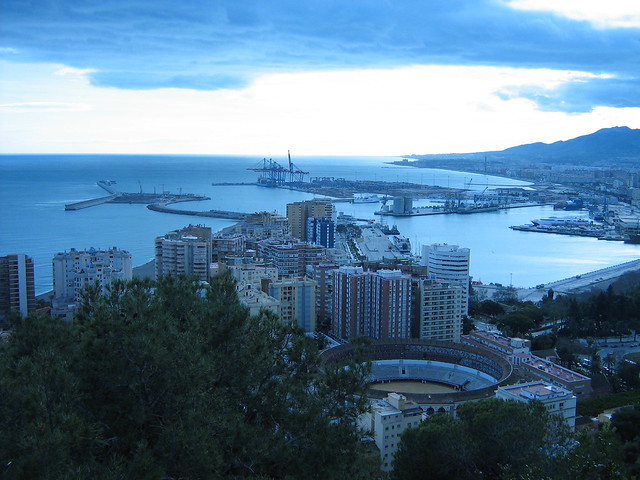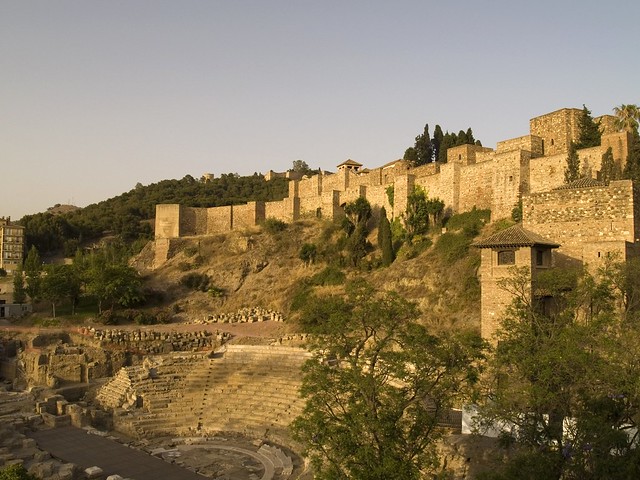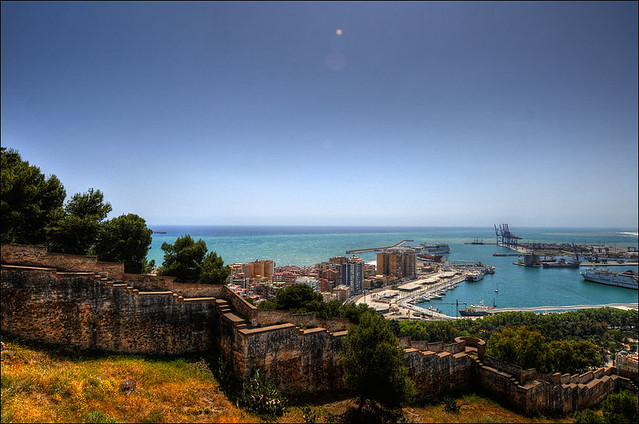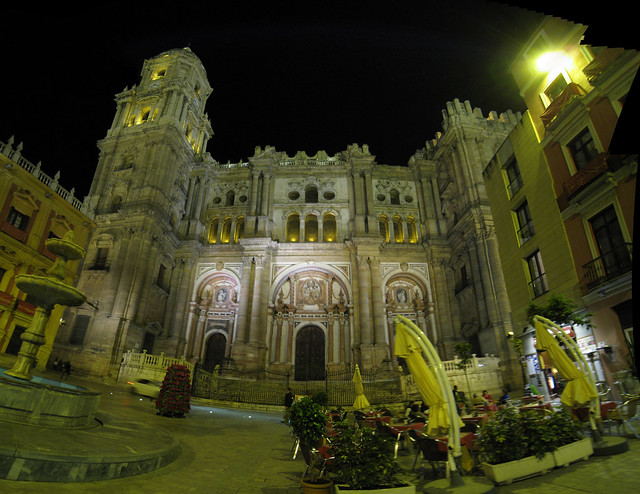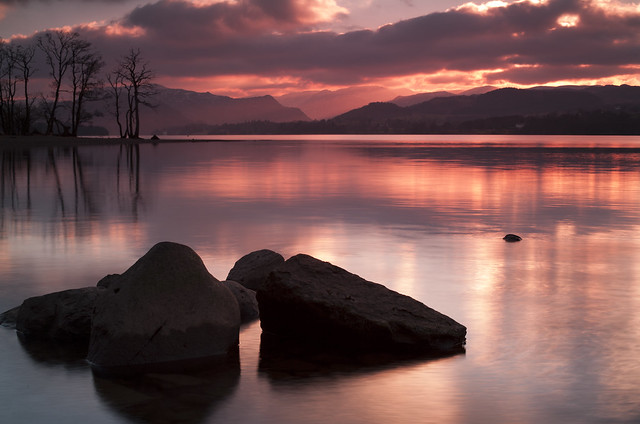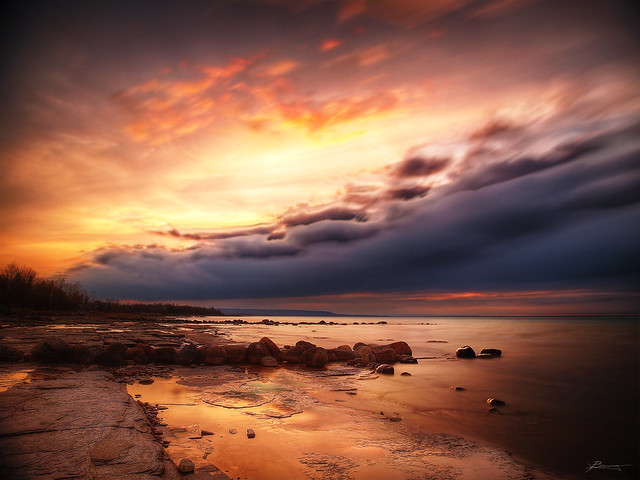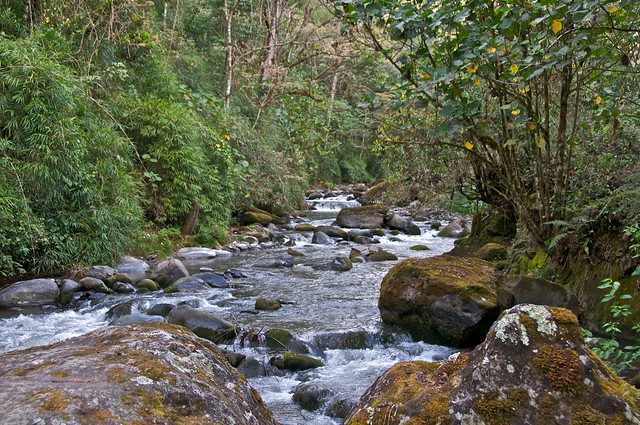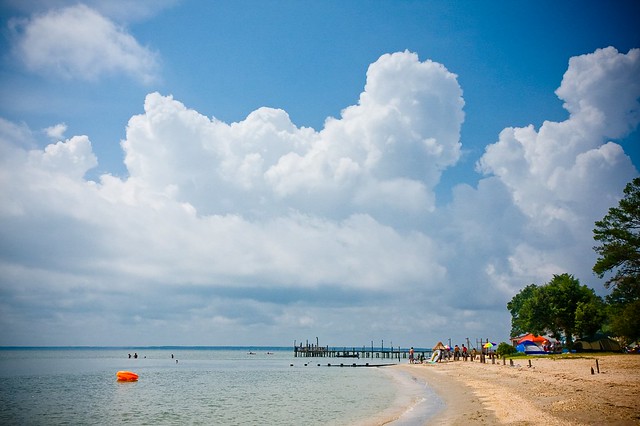Random Posts
France
Spain
UK
‹
›
Travel With Kids
USA
Travel Inspiration
Travel Tips
Despite the common perception of student life being little more than parties and lying in bed until noon, most students work very hard at what they do to ensure they achieve the qualifications they need. It can be difficult going straight into college from school, particularly as it coincides with a period of time where most people begin to form their adult identities.
Having been in education for the best part of twelve or thirteen years it is no surprise that many people decide to take a break or gap year between finishing college and going into university. There are many benefits to taking a gap year beyond that of simply having a well earned break from the classroom and essentially it is a great opportunity to travel, meet new people and pick up important life skills.
Funding your trip
There are different ways to fund such a trip. One way is to save up money from a part-time job whilst studying (bar work usually fits relatively well around student commitments) for a year or so.
Taking a loan is another popular way to fund the cost of a gap year but some people embark on their journey with the intention of finding casual labour along the journey. Although a lovely idea it is an inherently risky and unreliable plan so it is important to make sure you are prepared for any unforeseen circumstances and costs.
Carrying a credit card is a good way to cover yourself against any emergencies but not all credit cards are the same so make sure you choose one suitable for your needs. Take a look at the advance card online and see whether it is right for you.
Planning in advance
There is a lot to plan and the better planned your gap year is, the more you will get out of it. Beyond the obvious things such as booking the flights/travel you will also need to look into what visas are required as well as insurance, accommodation and most importantly healthcare arrangements and suitable vaccinations.
Giving back
Having established how to fund the gap year how about spending your time doing voluntary work aboard? There are countless projects and charities that operate in Ghana, Cambodia, Kenya, the Caribbean and almost every point in between and as well as the warm weather you will be able to significantly improve your CV and give something back to the world which you’re exploring.
Travel Tips
Normandy! The name brings a dozen different images to mind: William the Conqueror, the D-Day landings, Mont-St-Michel; the bleak landscape of the Cotentin coast, the sparkling summertime playground of the Côte Fleurie; sumptuous châteaux, historic abbeys, famous gardens; the orchards of the Auge, the picture-postcard scenery of the Suisse Normande; Monet’s home at Giverny, the Cabourg immor- talized by Proust – or perhaps it’s cider, calvados and camembert. If you are coming from England, you can get to Normandy using one of the car ferries to France. But if you are coming from other parts of the world, a train or plane would probably be the most suitable option.
So given the above, it looks like no matter how much time you will designate to your holiday to Normandy, chances are, you will barely scratch the surface of this rich and rewarding region. But if you are short of time here are the top 3 picks.
So given the above, it looks like no matter how much time you will designate to your holiday to Normandy, chances are, you will barely scratch the surface of this rich and rewarding region. But if you are short of time here are the top 3 picks.
Mont-St-Michel
One of the most spectacular sights in Normandy, this craggy rock crowned by a magnificent abbey appears to erupt from the surrounding landscape – a broad expanse of sand or sea, depending on the dramatic tides. The region’s star attraction since pilgrims first flocked here 1,000 years ago, it now draws some three million visitors each year – and has perhaps 50 true inhabitants.According to legend, St Michael, the archangel, appeared three times in a dream to Aubert, Bishop of Avranches, commanding him to build an oratory on Mont Tombe (tomb on the hill). When Aubert delayed, the impatient archangel prodded a finger into Aubert’s forehead, leaving a dent. Aubert’s church rapidly became a centre of pilgrimage for the miquelots, followers of the cult of St Michael, which had taken root in the West in the 5th century.
The brightly gilded statue on top of the abbey spire, sculpted in 1897 by Emmanuel Frémiet, portrays the archangel in traditional fashion (below). Armour-clad, he is slaying a dragon (symbol of the devil) with his sword. In his other hand he carries a set of scales - a reference to the medieval belief that it was his role to weigh the souls on Judgment Day. The Archangel Michael is the warlike angel of the Apocalypse, who slays the devil – in the form of a dragon – in the great conflict at the end of time. In Normandy, he is the patron saint of mariners.
Bayeux Tapestry
Both a unique historical document and an astonishing work of art, the Bayeux Tapestry tells the story of the Norman Conquest of England in 1066 – and it tells it with thrilling narrative drive. Stitched in eight brilliant shades of red, yellow and blue wool, the 58 strip-cartoon-style scenes were embroidered just 11 years after the Conquest onto a single 230 ft (70 m) linen cloth – at the behest, it is thought, of William the Conquerer’s half-brother Odo, Bishop of Bayeux. It is displayed in a renovated seminary, preceded by helpful explanatory exhibitions.
A slide show projected onto billowing white “sails” describes the Viking invasions of western Europe. Next, echoing the Tapestry itself, an 85 m (280 ft) band of cloth explains the story told by the embroidery. Using life-size figures, maps and scale models (including a delightful model of the village of East Meon), William’s
influence on every sphere of English life after his conquest is cleverly portrayed.
Honfleur
Seductively pretty, with cobbled streets and half-timbered or slate-fronted houses, Honfleur is a working port with a long maritime history. First mentioned in documents of the 11th century, by the 15th it had become a significant fortified port. Its heyday came some 200 years later, when it spawned intrepid explorers like Samuel de Champlain, who set out from here to found Québec. Le Vieux Bassin, the charming old dock at the heart of the town, is brimming with colourful sailing boats; artists have flocked here since the 19th century.Turner, Corot, Courbet, Daubigny, Dubourg, Jongkind, Monet and the Impressionists, the Fauves, Dufy, Friesz – these and countless others were drawn to Honfleur by the special quality of light in the Seine estuary, the unspoilt medieval town, and the beauty of the surrounding countryside – the same reasons that Honfleur has a thriving artists’ colony today.
Normandy is a culturally rich region and it is definitely worth spending some time here. And budget restriction should certainly not stop anybody from visiting. Although getting from England to France by train can be expensive, and to be honest, not very interesting (ok, maybe once for the sake of ticking the experience off your bucket list), a far more interesting choice is taking a cheap ferry to France. It doesn't take that long either, and it can be a relaxing time spent in good company. I've always found ferries to be quite charming and the idea of being surrounded by water (maybe watching a beautiful sunset at the horizon) sounds simply magical. It can be a surreal experience. All you need is to let go and enjoy. By the time you will get to France, you will already be in the right mood for your holiday.
Budget Breaks - Europe - France
Couchsurfing: the craze that is revolutionising travel across the globe. Giving you the chance to save money and gain a deeper understanding of a country’s culture, couchsurfing offers a solution for many of the issues globetrotting throws up – no wonder it’s the hottest trend in travel right now. But why exactly is couchsurfing so popular?
Cheap and cheerful
First and foremost, couchsurfing is an incredibly affordable way to get around. The concept involves staying with a host rather than staying in hostels or hotels – and it’s completely free! Travelling expenses can add up scarily fast, so you’ll be grateful for any savings made along the way.
Expand your social horizons
Couchsurfing is a great way to meet local people. This not only gives you a deeper understanding of the culture of a particular country or region but also benefits your travelling plans, as they can help you plan where to go. Lasting friendships can stem from couchsurfing, so that by the time you touch down on home soil you’ll have a circle of friends from all over the world.
Trim down accommodation search time
If you are a good guest – respectful, sociable and a pleasure to have to stay – you may find that the camaraderie among the couchsurfing community provides you with places to stay in neighbouring vicinities, which gives you more time to spend exploring rather than finding your next hostel.
Enhance your experience
Good hosts will be more than willing to show you around, clue you in on the best things to see and do and give you a deeper and more profound insight into a country than a guide book can ever hope to do. In this way, staying with locals can enrich your travelling experience, helping you to make the most of your adventure.
Peace of mind
With a three million strong community that is growing every day, couchsurfing is a safe way to travel. You can choose whether you stay with a male/female/couple and are free to peruse their public profiles to gauge personality, common interests etc. You can also see reviews left by other travellers who stayed with a certain host and contact the traveller to see whether they would stay there again.
An additional way to ensure peace of mind is to invest in backpacker travel insurance before you go. While the unpredictability of travelling is half the fun, it is important to be covered should anything go wrong.
Photo by Wonderlane via Flickr Creative Commons
Photo by Wonderlane via Flickr Creative Commons
Budget Accommodation
A 'city break' is a great way to get away from it all without having to go through all the preparation and decisions that a big annual holiday often involves.
Choosing a city to visit is easy and makes for a perfect stress free getaway where you can do as much or as little as you would like.
One of the reasons this type of holiday has become so popular amongst many people in the past few years is that low cost airlines with great reputations now travel between a wide number of cities around the UK and Europe. It is simple and easy to choose from a wide range of cheap flight tickets and pick a great destination for a relaxing break.
Local airports
There are now lots of different airports around the UK that might be closer to your home than the major hubs such as Heathrow, Glasgow and Manchester. Combined with the number of destination cities that are within easy reach, there is plenty of opportunity to experience unique sights and sounds within only a few hours travelling time from your own home.
Prague
Prague is the capital of the Czech Republic and it is one of the most important and historic cities in all of Europe. The many attractions include the Prague Castle complex and the Old Town, which is included in the UNESCO list of World Heritage Sites.
As with any other major modern capital, the more contemporary side of the city includes must-see locations such as the Museum of Decorative Arts which exhibits lavishly crafted furniture and clothing.
Taking the lift up to the eighth-floor of the Zizkov Tower offers stunning views across the city and is something that every visitor should do.
Belfast
Belfast might not be high on the list of airports when most people think of choosing somewhere to fly to for a weekend break but the city offers a mix of attractions suitable for a romantic weekend for two, right through to being an ideal location for a stag or hen party.
As befits a modern contemporary European city, the capital of Northern Ireland boasts the whole range of attractions and facilities you would expect, as well as a host of unique features such as traditional Irish pubs.
Paris
The French capital has a well won reputation for romance, as well as for a rich history and culture. The great culinary traditions of fine dining mean that food fans can have experiences of a lifetime whilst iconic landmarks such as the Eiffel Tower, Pompidou Centre and Notre Dame provide a perfect backdrop for a memorable break.
Europe - Travel Inspiration
I remember a trip to Larnaca many years ago and ever since, I’ve always wanted to return with the kids. After many weeks waiting for the holidays to come around, they finally did and we were on our way.
We had dropped the dog off with my parents a few days earlier, mainly to avoid last minute hiccups with his new surroundings. He was fine, we didn’t hear a whisper from mum – she must be feeding him well.
On the way to the airport, as always, there were a few last minute checks, where questions such as ‘does everyone have their passports?’ begin to fill the vehicle. Once we were all satisfied with the answer, we began to relax and enjoy the taxi ride.
Following our flight, the first change I noticed was the airport, which has undergone a massive rejuvenation since my last visit and now houses a new terminal. This made the entire airport experience a much quicker one and both our bags and transfers were delivered in next to no time.
Southern Cyprus boasts a total of two vibrant ports, Larnaca and Limassol. Both areas are constantly being updated, so I was interested to see if the area looked any different.
A little something for everyone
I have to say we were all pleasantly surprised, the port area boasts an elegant ancient quarter, enclosed by a variety of cosy bars and quaint tavernas. We stopped for lunch at one before visiting the town’s medieval castle – a trip I had promised the children.
We quickly discovered that as well as the vibrant area of Larnaca, there’s also a sleepy side to this city. This region sits opposite a multitude of palm trees and a picturesque salt lake. The recently revamped yacht marina is certain to become a major tourist spot.
In the far southwest of the island is Paphos. A number of my friends visit this region on a regular basis and I’ve been told that the town boasts an abundance of welcoming resorts. We spotted one that allowed us to use their facilities and let the kids cool down in the pool before moving on.
Since my last visit, this holiday spot has undergone a number of changes. Despite this, I had as much fun this time round as I did last time. The accommodation, dining and scenery all combine for a great visit and I’ll certainly visit again.
Photos via Flickr Creative Commons
Cyprus - Europe - Travel Inspiration
Although you will come across backpackers headed out somewhere in the world for just a couple of weeks, typically the whole idea of backpacking is to explore a country, a region or even the whole planet for at least a few months.
One of the most commonly held misconceptions concerning this is that everyone who sets off into the sunset for a longer period must have lots of money to back them up. Of course, if you intend staying at top end hotels, flying first class and eating in good restaurants you will indeed need to have a big bank balance to match your style of travel.
However, there are many ways to make your hard earned funds stretch as far as possible, while still having the time of your life and sometimes actually enhancing it.
Planning
Planning ahead and ensuring you have all the essential travel items you need for your trip is a great way to save yourself money in the long run! Buying plug adapters, mosquito repellents and space saving items, such as microfibre travel towels, prior to your departure will save you some cash that would be better spent on life changing activities and experiences.
Accommodation
How cheaply you will be able to bed down each night will of course depend to some degree on your destination however all places have budget options. Additionally, consider each of the following to help keep the costs down.
- Many countries have different terms to describe their budget accommodation options which might not be familiar to you. Find out what these are to make sure you are not missing out.
- If you are headed to a touristy place then typically those options in the centre will be more expensive. Consider staying somewhere just a little removed or a short bus ride away for example - chances are you will get something better for a lower price.
- Accommodations which place you beach-side, lake-side or otherwise right next to something naturally beautiful can charge the highest prices so walk a street or two back to get the better deals.
- Some countries have accommodation options which include some meals, most typically breakfast. At first glance these places are often dismissed as being non-competitively priced but some quick maths may actually show they are saving you money.
- Popular guide book listed accommodation options naturally fill up fastest but bear in mind that these property owners sometimes start charging inflated prices as a result.
- A dorm room in a hostel is almost always going to be your cheapest option but be aware that not all hostels are suitable for everybody. Some are all about the party, some attract older travellers, some are family friendly and so forth. Also, hostels vary considerably with what they offer – some have kitchens for meal preparation, some offer certain enticing freebies (free tea/coffee being one of the more common ones), some include breakfast, some charge extra for lockers/bedding/towels etc. So, unless you are happy with a lucky dip approach then do some research.
- The traveller who is unwilling to make his way without constant reference to 'The Lonely Planet' is going to miss out on some of the loveliest places around. Often the best and cheapest places can only be found by chance on arrival somewhere and are otherwise totally absent from guide books, tourist literature and websites. If this approach seems too challenging for you then book yourself somewhere for the first night and then scout about for those unlisted (and low cost) little gems.
- Camp sites are also a budget friendly choice where they are available. Don't assume that they are not an option for you if you don't have your own gear – some will offer the hire of everything you need too, including the tent.
- Consider travelling during a country's/region's low season when tourists are fewer and prices drop accordingly with greater competition and better deals offered in return for your custom.
- Wherever possible buddy up with fellow travellers. Although offering to share a room with some-one you have just met might be thought weird elsewhere, when travelling the rules change and among backpackers it is very common practice. Many travellers, particularly solo ones who might have to pay the same price for their room as couples, are always looking for ways to save money on accommodation costs.
- Consider becoming a couch-surfer. However, although a free bed for the night might be part of the deal, you won't be very well received if that is all you are looking for. The whole ethos of this rather wonderful social network is all about connecting travellers and locals and having opportunities to see places in a way not typically open to tourists. The website has extensive information and advice on staying safe for those of you concerned about this aspect.
Meals
- Try and eat food typical of the country you are in. Western options, should they be available, will always cost more.
- Watch the locals – they will usually be eating at the best and cheapest places.
- Preparing your own food will nearly always work out cheaper than buying prepared food. Many hostels and even some guesthouses have the facilities for you to do this.
- There are many countries in the world, particularly Asia, where temporary food stalls and street carts are a common sight. These places can serve up excellent quality food and are usually the cheapest options around by far. Markets are also good for budget food options.
Travel and Getting About
Almost every country in the world has its own special and weird and wonderful ways of publicly transporting locals and tourists from A to B as well as options which will be more familiar to you – trains, planes, buses and so forth. Do a bit of research before you head off to find out what your destination offers so it won't be quite so bewildering once you arrive. The rest will be learning as you go.
- Travel how the locals travel. This will nearly always be your cheapest option although admittedly it won't always be the most comfortable. Additionally, you will get to have all sorts of adventures and experience more intimate glimpses into the culture and day to day life of the local people.
- Get chatting with other travellers to find out any useful local knowledge they have gained or otherwise helpful and cost saving advice and tips.
- Assume nothing. In some places in the world the most expensive form of travel might be the cheapest where you come from and vice versa. This means travelling by domestic airline might work out cheaper than a long distance bus for example.
- If you need to travel a long distance then consider opting for transport which offers overnight/sleeping options. This way the journey passes while you sleep and you save a night's accommodation.
- If there is an attraction or sight that you want to visit then remember that signing up for an organised tour is always going to be more expensive than making your own way there.
Entertainment
Almost anywhere that you can go in the world which has seen travellers and tourists before you, will offer a range of tours, activities and excursions. The idea of having everything organised for you can seem very appealing but signing yourself up for these can be one of the quickest routes to travel poverty.
- Be your own tour guide by arming yourself with free tourist literature and maps available from tourist offices, hostels and other accommodations, guidebooks or the Internet.
- Some places of interest are only possible to visit through an organised tour because they are remote or hard to get to but this is rare. Typically there will always be ways to get somewhere under your own steam. You can often book tour guides on site at such places should you want this type of service.
- Almost everywhere in the world has a whole range of free things you can do and see if you don't mind doing a bit of research. This might include national parks, museums, carnivals/festivals, historical points of interest and so on.
- Keep your eyes and ears open – talk to other travellers, read street flyers and posters, visit tourist information points and browse tourist literature available at your accommodation to see what is on offer.
- Type 'free things to see and do in ________ (your destination)' into an online search engine and be amazed at your options. Additionally, many countries/regions/cities have their own official tourist websites where free activities and sights are often listed separately.
- Be picky – make a list of your own personal 'must-dos' and save your money to do these without being tempted to sign up for everything going.
Working Your Way
Some people who travel plan in advance to work at a particular destination while for others it happens by chance. It is a great option should you find your funds hitting alarming lows or come across something you would really like to do but don't have the funds for. Working as you travel can be on a casual day by day basis or something requiring a longer time commitment and covers just about every type of indoor and outdoor work going.
Be aware however, that in order to work abroad, many countries require the individual to hold a working visa – costly and involved in some cases, easily obtained in others.
Photos via Flickr Creative Commons
Travel Tips
The smallest of Andalucía’s eight provinces, Málaga is also its most populous, swelling to bursting point with the sheer weight of visitors in high summer. Although primarily known as the gateway to the Costa del Sol and its unashamedly commercial resorts such as Torremolinos and Marbella, the province has much more to offer than just its coastline. To most incoming tourists the provincial capital Málaga is merely “the place by
the airport”, but it’s also a vibrant city in its own right, with a population of half a million.
Conveniently, flight deal publishers such as CheapFlights offer lots of great deals on flights to Malaga (check it out here). From the airport, the electric train, Ferrocarril, provides the easiest and cheapest way into town. First impressions of Málaga are not encouraging. A large and bustling seaport with a population passing half a million, it’s the second city of Andalucía, after the charming city of Seville, and also one of the poorest, with unemployment numbers persistently among the highest in the region. Yet, though many visitors get no further than the train or bus stations, put off by the grim clusters of high-rises on the fringes, if you penetrate beyond these you will find yourself in one of the most atmospheric and historic cities in Spain. Lorca described Málaga as his favourite town and, given a chance, it can be a surprisingly attractive place, an impression boosted by the ebullient and big-hearted malagueños, among the friendliest people in Andalucía.
Around the traditional fishing villages of El Palo and Pedregalejo, now absorbed into the suburbs, is a series of small beaches and a paseo lined with some of the best fish and seafood cafés in the province. Overlooking the town and port, the Moorish citadels of the Alcazaba and Gibralfaro are excellent introductions to what you can expect at Córdoba and Granada, and while sevillanos loudly proclaim that there is only one Semana Santa worthy of the name, malagueños furiously disagree. The processions are celebrated here with great fervour and with much larger floats than those of Seville, carried by up to two hundred sober-suited males or robed penitents. In mid-August, at the peak of the tourist season, the town lets rip in its Feria de Málaga – one of the wildest and most spectacular fiestas in Andalucía.
Incidentally, Picasso was born in Málaga, and although the artist moved away in his early years, you can still visit his birthplace as well as the spectacular Museo Picasso Málaga housing a collection of his major works.
Málaga is bisected by the seasonal Guadalmedina river. All the major sights lie to the east of this and below the Alcazaba. From the Alameda, the city’s main thoroughfare, the cathedral, Museo Picasso and a clutch of interesting churches all lie within a few-minutes’ walk. The city has embarked upon a plan to revitalize the casco antiguo (old town) by pedestrianizing and refurbishing much of the monumental zone and laying with marble the whole of c/Marqués de Larios – a fashionable shopping street – and the focal Plaza de la Constitución. This regeneration program is now well advanced and is set to transform central Málaga in the years ahead.
Alcazaba
Málaga’s magnificent Alcazaba and Gibralfaro are an exuberant contrast to the dour fortresses of Castile. At the Alcazaba’s entrance stands a Teatro Romano, unearthed in 1951 during building works. The theatre, constructed in the second century BC, is now used as an auditorium for various outdoor entertainment. From here a path winds upwards, lined by the cypresses and flower-encircled arbours so loved by the sybaritic Moors. The citadel too is Roman in origin, and interspersed among the Moorish brick of the double- and triple-arched gateways are recycled blocks and columns of classical marble.
Although the Moors began building on the hill in the 700s, the Alcazaba with its interior palace as we see it today dates from the early decades of the eleventh century and was substantially restored and rebuilt in 1930. It was the residence of the Arab emirs of Málaga, who carved out an independent kingdom for themselves upon the break-up of the Western Caliphate during the same period. Their independence lasted a mere thirty years, but for a while the kingdom grew to include Granada, Carmona and Jaén. Strolling among the restored patios and terraces lined with cypresses, aromatic plants and ornamental pools the impression is of a smaller-scale Alhambra, and traces of stucco decoration surviving on the arches are similar to the artistry to be seen at Medina Azahara near Córdoba.
The recently refurbished small palace houses displays of ceramics found during archeological excavations. To reach the Alcazaba without the climb, you can use a lift constructed inside the hill itself. With its entrance on c/Guillen Sotelo, directly behind the Ayuntamiento, it transports you effortlessly upwards to emerge in the heart of the palace.
Gibralfaro castle
Above the Alcazaba, and connected to it by a long double wall (the coracha), is the Gibralfaro castle (same hours and entry charges as Alcazaba). It’s reached by climbing a twisting path that skirts the southern walls passing bougainvilleadraped ramparts and sentry-box-shaped Moorish wells. You can also approach from the town side, as the tourist coaches do, but this is a lengthy, rather unattractive walk and not one to be done alone after sundown. Built by Yusuf I of Granada in the fourteenth century and last used in 1936 during the Civil War, the castle, with its formidable walls and turrets, has, like the Alcazaba, been wonderfully restored and now houses an interesting museum dealing with the Gibralfaro’s history. Among a collection of military exhibits from all periods there is a splendid scale model letting you see how the city and Alcazaba complex would have looked in Moorish times. There’s also a display of seventeenth-century playing cards that were made in the factory in nearby Macharaviaya. A walk around the castle’s ramparts affords terrific
views over the city, the coracha, and the complex fortifications of the Alcazaba.
The Gibralfaro has its own bar, but while you’re up here, a pleasant place for a meal or a drink is the nearby Parador de Málaga–Gibralfaro, with its terrace overlooking the city. It’s reached by following the road leading out of the castle’s car park for 100m and turning right into the parador’s grounds. Next to the parador’s entrance is a mirador with a stunning view over the harbour, city and Plaza de Toros. If you’re feeling lazy, bus #35 from the Alameda Principal in the city centre will drop you by the castle entrance.
The Catedral
Dominating the views from the Gibralfaro is Málaga’s peculiar, unfinished Catedral. It lacks a tower on the
west front, the result of a radical malagueño bishop having donated the earmarked money to the American War of Independence against the British. Despite this curiosity, which has resulted in the building’s popular nickname La Manquita (“the one-armed lady”), the cathedral lacks much else of interest. The soaring interior is distinguished only by an intricately carved and naturalistic seventeenth-century sillería (choir stall) with outstanding sculptural work – in particular St Francis and John the Baptist – by Pedro de Mena. However, the Iglesia del Sagrario (same ticket and hours as cathedral; also open during services), on the cathedral’s northern flank, is worth a look, if only for its fine Gothic portal, dating from an earlier, uncompleted Isabelline church. Inside, a restored and magnificent gilded Plateresque retablo, which is brilliantly illuminated during services, is the work of Juan Balmaseda.
The Museo Picasso
Located just round the corner from the cathedral on c/San Agustín, is the Museo Picasso Málaga housed in an impressive sixteenth-century mansion – the former residence of the counts of Buenavista – with an elegant patio. A source of enormous pride for the city, the museum was opened by the king and queen in 2003, one hundred and twelve years after Picasso left Málaga at the age of ten and to where he returned only once for an unhappy, fleeting visit in 1901. In later life he toyed with the idea of sending “two lorries full of paintings” to set up a museum in Málaga but vowed never to visit Spain while General Franco was still alive – Picasso died in 1973 and was outlived by the dictator by two years.
The museum’s permanent collection consists of 204 works donated by Christine and Bernard Ruiz-Picasso, the artist’s daughter-in-law and grandson, while the temporary collection comprises loaned works and special exhibitions (not necessarily connected with Picasso). Whilst not on a par with the Picasso museums in Paris and Barcelona, it does allow you to see some of the lesser-known works that Picasso kept for himself or gave away to his lovers, family and friends – rather harshly described as “the less saleable stuff ” by one critic
Europe - Spain - Travel Inspiration
Chennai, with its famous malls, shops and market districts, offers tourists some legendary shopping. You can get anything you want in this city, and there are some things you absolutely mustn’t go home without.
Navigate the labyrinthine corridors of Spencer Plaza; pick up gifts for the folks back home at curio shop Cane & Bamboo; find bargains in George Town and Ranganathan Street; browse through unique local artworks at Poompuhar. Whatever you do though, don’t leave the city without examining the Kanchipuram silks at Nalli — they’re the best money can buy.
Mall-Shopping in Chennai
Located opposite Taj Connemara, Spencer Plaza is Chennai’s oldest mall; with around 400 shops, it’s billed as the largest mall in Southern India. Here you can get a good price on cotton goods, linens, kurtas and home furnishings at Fabindia. You can also buy quality leather goods, designed by Italian designers and crafted by Indian artisans, at Hidesign.
If you’re looking for a smaller, less chaotic and more posh mall, try the Ispahani Center in Nungambakkam High Road. Visit the shop Casablanca to purchase quality clothing for men and women.
Gifts, Curios and Objets d’Art
Proprietress Mrs. Thangam Philip can tell you anything you want to know about the various curios and gifts she sells in her Marshalls Road shop, Cane & Bamboo. Here you’ll find spoons, bowls, trays, lamps and other handmade wooden items.
If you’re looking for some local artwork, pop into Poompuhar, the government emporium of Tamil Nadu, in Anna Salai. Here you’ll find all sorts of local art pieces — whether you’re in the market for paintings, bronze figures or wood carvings. The Victoria Technical Institute, on the same street, also sells carvings and paintings. The posh Khazana Shop at Taj Coromandel on Mahathma Gandhi Road offers a high-end selection of sarees, silks and objets d’art.
Chennai Market Districts
If you fancy some street shopping, Chennai is the place to do it. When planning your Chennai holiday, find Chennai hotels close to its famous market districts to make your stay more enjoyable.
The famous Ranganathan Street may be the busiest of the city’s many market districts, where you can buy anything from vegetables to lingerie. Keep your wallet safe as you make your way through the crowds. Keep in mind some of the designer goods found at some of the stalls are imitations.
For colourful cotton garments, don’t miss Cotton Street in Pantheon Road. From brilliant florals to drab pastels, you’ll find every pattern and colour you could want in the 60 or so market stalls on Cotton Street. Purchase a pre-matched outfit or mix and match for yourself. Bargaining is expected here.
Chennai grew up around the British Fort St. George beginning in the late 17th century; the part of town surrounding the old fort is still known as George Town. Today, George Town is a wholesale market where you can find bargains on everything from electronics to medicinal herbs, sarees, sewing tools and stationery. Each narrow street in George Town sells a different product.
Moore Market in Park Town was once a second-hand bookshop, but after a 1985 fire, a more eclectic market took its place. Here you can buy pet supplies, meat, poultry and electronics — as well as loads of books in its many small bookshops. Take your time rifling through the shelves to find masterpieces hidden among common works of pulp fiction.
Don’t Leave Without a Kanchipuram Silk Saree From Nalli
You can buy Kanchipuram silk sarees anywhere in Chennai, but the locals only go to one place: Nalli, on Nageswaran Road T. Nagar. Since 1928, Nalli Chinnasamy Chetti and his descendants have woven and sold the best Kanchipuram silks here. Buying one has become a tradition for Chennai residents and visitors alike.
No other Kanchipuram silk saree can measure up to the quality of the fabric and handiwork of a Nalli saree. If you buy nothing else on your Chennai holiday, visit Nalli and buy a Kanchipuram silk saree or another silk item made by these master craftsmen.
Chennai’s celebrated malls and market districts have some of the best shopping in India. Whether you’re looking for souvenirs, colourful cotton clothing, artworks or knickknacks, Chennai has something for everyone.
About the Author: Contributing blogger Shilpa Bhattacharya is a travel writer and Chennai resident. For over 15 years, she has browsed the malls and markets of Chennai in search of the greatest bargains.
Photo source
Asia - India - Travel Inspiration
For many, holidays are more than just a time to relax – they’re a time to explore and discover new landscapes and experiences.
For intrepid explorers looking for their next challenge, we’ve put together this list of five fantastic holiday hotspots that have the allure of natural beauty and varied wildlife. All you need to do is check your backpacker travel insurance is up-to-date with reputable firms like Allianz Global Assistance and pick where to go.
1. The Lake District, England
It may have received more than its fair share of attention over the years but you really cannot deny the natural beauty of the Lakes. The quintessential English destination, intrepid explorers should stay clear of the well-travelled routes such as those surrounding Lake Windemere and head off the beaten track for a more hands-on experience.
2. Table Mountain, South Africa
A country packed full of diverse landscapes, our personal favourite from South Africa is the area surrounding Table Mountain. Even climbing the foothills will bring you into contact with a variety of wildlife and climbing to the summit is an exhilarating experience, especially if combined with an overnight camping expedition.
3. The Amazon Rainforest, South America
With a whopping 2,100,000 square miles of rainforest, it is hardly surprising the Amazon made our list of top natural holiday hotspots. Representing more than half of the world’s remaining rainforests, any trip here will be truly spectacular and give you the opportunity to explore an area that boosts unparalleled diversity when it comes to plant and animal species. According to estimates , there are 2.5 million species of insect in the rainforest with around 2,000 birds and mammals and tens of thousands of plants.
4. Ontario, Canada
Home to the Niagara Falls, this is another obvious inclusion for our list. Actually a collection of three waterfalls, Niagara Falls boasts the highest flow rate for waterfalls in the entire world. Whilst many people are aware of its many accolades, something which continues to surprise is the green colour of the water. This is caused by dissolved salts which are generated by natural erosion which occurs at the falls.
5. Savegre, Costa Rica
Our final entry is a special one for bird-watchers with Cost Rica known as an unbeatable destination. As it contains a larger number of the different life zones found on this planet – which range from lower Sonoran (low, hot desert) to Arctic-Alpine (alpine meadows or tundra) and were developed as a concept by C Hart Merriam – there are plenty of varied eco-systems for birds to thrive in. You can take official bird-watching tours to get the most value from your trip but the cloud forests of Savegre are our favourite.
Photos via Flicker Creative Commons
Travel Inspiration
Culture and activity holidays are great fun but sometimes all we want to do is sit under a palm tree and unwind to the sound of lapping waves. Beach holidays offer the ultimate relaxation and with long stretches of white sand and shimmering turquoise waters, who can resist a beach escape?
Whether you want to explore hidden coves, lie on the warm sand all day or learn a new water sport, luxury beachside breaks can cater to all tastes.
Côte d’Azur, France
France is a favourite with Brits seeking summer sunshine. Not too far from home but with a climate and landscape that wouldn’t look out of place in the Caribbean, the Côte d’Azur is an idyllic holiday hotspot, offering long hours of warm sunshine, gorgeous white sand beaches and sheltered coves.
With a leisurely pace of life you’ll find here, this is one of the most relaxing holiday destinations on the market. You can even visit San Tropez and its magnificent yachts – an area particularly popular with celebrities.
The Costas, Spain
Brits have always found it hard to resist the balmy climate and stunning beaches that Spain has to offer and if you opt for a holiday with Canvas Holidays you have the choice between the Costa Brava and the Costa Dorada.
The Costa Brava is home to Tamariu, where you can leisurely stroll along the sandy beach and take a refreshing dip in the clear waters of the bay and Caella de Palafrugell, which has great beaches and superb seafood.
The Costa Dorada is home to the world-famous city of Barcelona, which boasts an attractive beach, surrounded by artistic and cultural treasures that have made the city what it is today.
Alternatively, why not head to Tarragona and enjoy the lovely sandy beach with fantastic views of Tamarit Castle, or try your hand at the water sports on offer?
Trapani, Sicily
If you’re seeking some winter sun or you want to top up your tan over summer, Sicily makes a great choice. The island boasts some of Italy’s most beautiful beaches, with long stretches of dazzling white sand complemented by shallow, clear waters – great for swimming or discovering the marine life.
Trapani is particularly good spot for beachgoers; it has a medieval culture accessible via cable car and vibrant nightlife to match the stunning coastline.
Porec, Croatia
If you’re seeking sunshine in a more far-flung destination, why not jet off to Croatia? This exotic destination has plenty to offer the typical sun worshipper and Porec is a place that has it all.
The long pebble beach is garnished with coves that give a sense of privacy. It also offers you the chance to indulge in a variety of activities, from rock-pooling to water sports – the perfect place for those looking for their next thrill.
Photo via Flickr Creative Commons
Europe - Travel Inspiration
Subscribe to:
Comments (Atom)

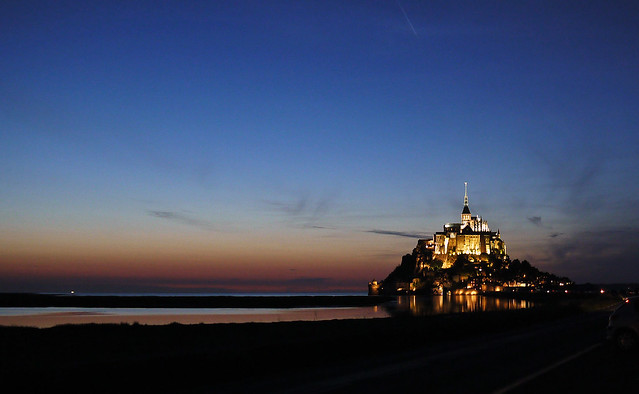
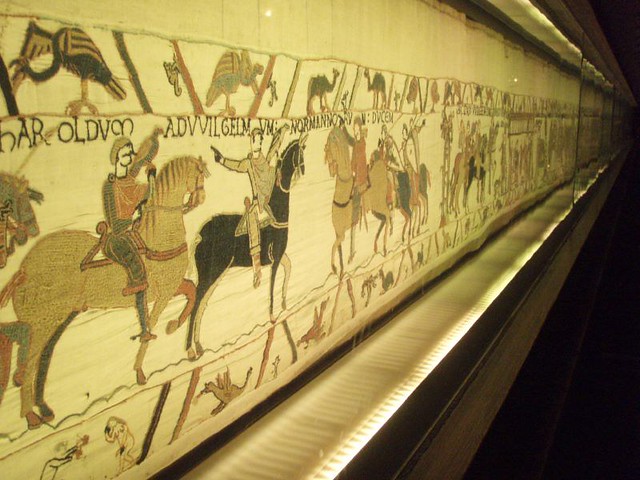
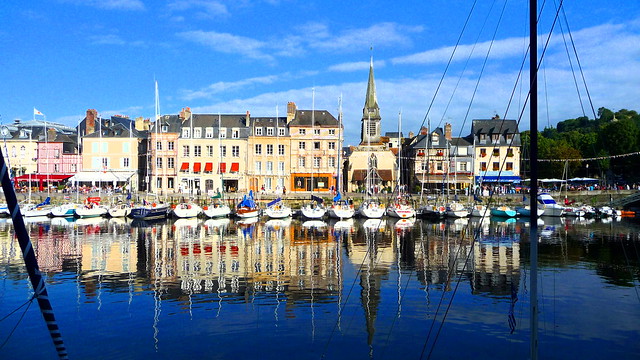
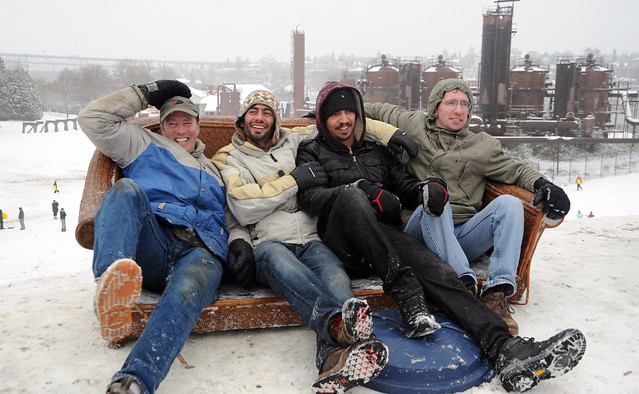
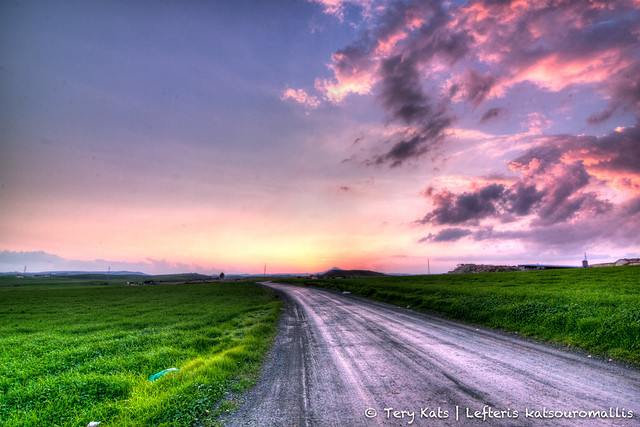

![Jahaz Banda (Meadows) [Explored]](http://farm8.staticflickr.com/7451/9280771079_915a910091_z.jpg)
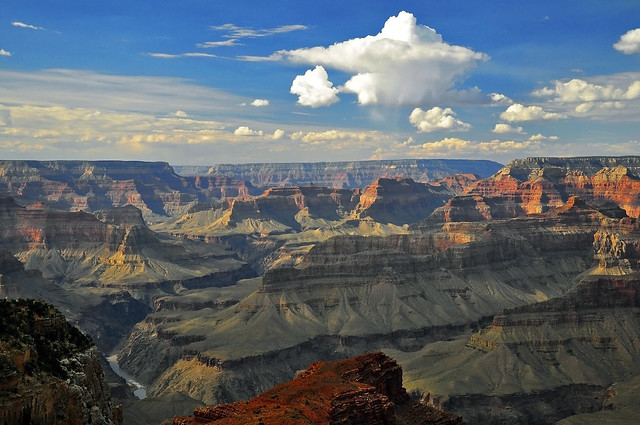
![Lifeline!! [Explored]](http://farm3.staticflickr.com/2845/9256853436_2cd9f40017_z.jpg)

